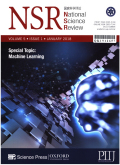- 钛学术文献服务平台 \
- 学术期刊 \
- 科教文艺期刊 \
- 科研管理期刊 \
- 国家科学评论(英文版)期刊 \
Active versus passive reading: how to read scientific papers?
Active versus passive reading: how to read scientific papers?
基本信息来源于合作网站,原文需代理用户跳转至来源网站获取
摘要:
INTRODUCTION
'How do you read a scientific paper?'may at first seem like a superfluous question.Given how most biomedical research papers are structured,1 it might be natural for beginning (or even not-so-beginning) students to assume that one should first read the Title, then the Abstract, followed by the Introduction.Most might elect to skip the Methods section thatcustomarily follows the Introduction (although many journals now place it towards the end of a paper), as it contains far too many technical details and is therefore boring.The Results section, which contains the meat of the paper, i.e., experimental data presented in the form of figures and tables, might receive the most attention, with the Discussion section that follows as a close second.

推荐文章
英语专业阅读教学中的"what-why-how"
图式理论
认知心理
'what-why-how'
整体阅读教学方式
英语专业
READ-F树脂的除氟性能研究
树脂
吸附
除氟
运用Jigsaw reading建设"悦读"课堂
Jigsawreading
合作学习
优缺点
改进措施
关于Active Worlds在教育领域中的应用
虚拟世界
教育
Active Worlds
内容分析
关键词云
关键词热度
相关文献总数
(/次)
(/年)
文献信息
| 篇名 | Active versus passive reading: how to read scientific papers? | ||
| 来源期刊 | 国家科学评论(英文版) | 学科 | |
| 关键词 | |||
| 年,卷(期) | 2020,(9) | 所属期刊栏目 | PERSPECTIVES |
| 研究方向 | 页码范围 | 1422-1427 | |
| 页数 | 6页 | 分类号 | |
| 字数 | 语种 | 英文 | |
| DOI | 10.1093/nsr/nwaa130 | ||
五维指标
引文网络
引文网络
二级参考文献 (0)
共引文献 (0)
参考文献 (1)
节点文献
引证文献 (0)
同被引文献 (0)
二级引证文献 (0)
1986(1)
- 参考文献(1)
- 二级参考文献(0)
2020(0)
- 参考文献(0)
- 二级参考文献(0)
- 引证文献(0)
- 二级引证文献(0)
引文网络交叉学科
相关学者/机构
期刊影响力
国家科学评论(英文版)
主办单位:
中国科技出版传媒股份有限公司
出版周期:
月刊
ISSN:
2095-5138
CN:
10-1088/N
开本:
大16开
出版地:
北京市
邮发代号:
80-671
创刊时间:
2014
语种:
eng
出版文献量(篇)
773
总下载数(次)
0
总被引数(次)
431
期刊文献
相关文献
推荐文献

 免费查重
免费查重










